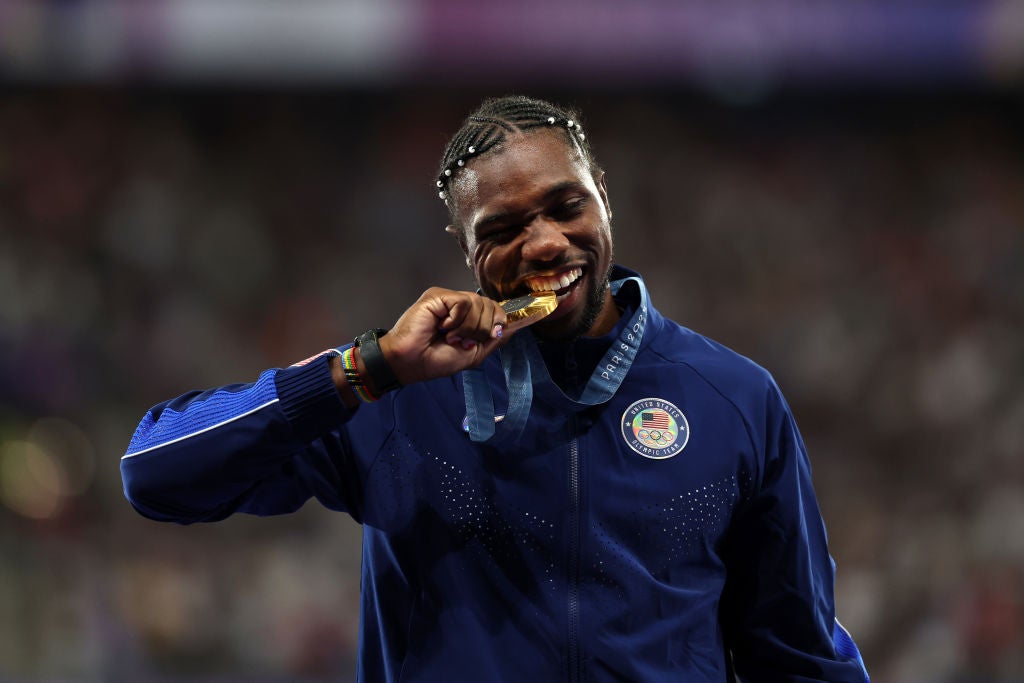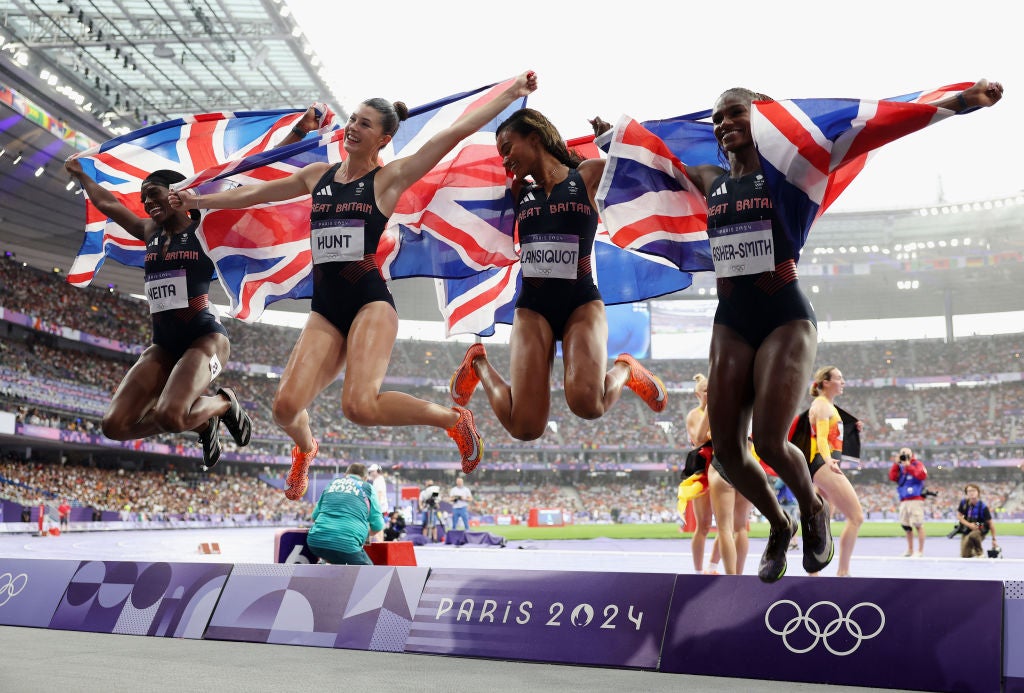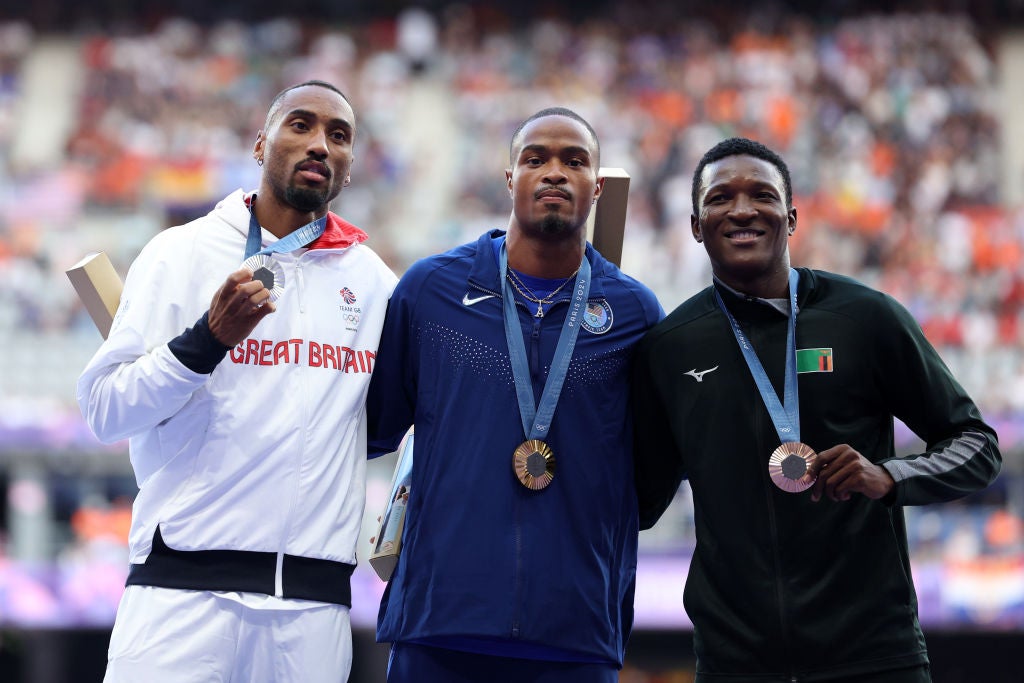“I haven’t felt this nervous since July 1996,” four-time Olympic champion Michael Johnson joked. “It’s the same nerves that I felt when I was competing, where you know that you’re the best, but you have to go out there and prove it.”
The former sprinter was speaking to media ahead of the launch of his new passion project, Grand Slam Track, which gets underway in Kingston, Jamaica on Friday. A new track league of four meets involving head-to-heads between the world’s best athletes, Grand Slam Track promises fans and athletes Olympic-style competition – but much more frequently than every four years.
The premise, and thinking behind it, was simple.
“I think the word innovation has probably been used way too much in track,” Johnson said. “At the very beginning, I said to my team, let’s focus on getting back to what makes track so amazing. It’s just the racing. There’s never been a time when you’ve got the best athletes racing together and there isn’t absolute fireworks.”
The male and female athletes are each subdivided into six categories of eight athletes, such as Short Sprints, with the eight in that group competing in the 100m and 200m each weekend. 48 of the 96 competitors are signed ‘Racers’, contracted to appear at each of the four meets. The remaining half are ‘Challengers’, who will swap in and out.
Throughout the conversation Johnson was keen to emphasise the most important element of the project: the athletes. Essentially Grand Slam Track’s product is the athletes, and the social-media-friendly rivalries and personalities – “high-stakes drama,” in Johnson’s words – that spectators can follow throughout the season.
“It’s not about necessarily trying to be innovative and recreate the sport,” he said. “This sport is amazing as it is. It doesn’t need a lot of gimmicks and bells and whistles. It does when you’re missing head to head competition. We’ve seen over the last several years, in the absence of that, you try to figure out a gimmick to draw people in. We don’t have to do that, because we have the athletes.”
While the new league has a starry field of signed Racers, including the likes of Olympic 200m champion Gabby Thomas and surprise 1500m gold medallist Cole Hocker, the field is also notable for its absences: Jakob Ingebrigtsen, Keely Hodgkinson, and Noah Lyles, for example.
Johnson conceded that the format of each category might put off some of those athletes who race across different distances and don’t necessarily fit into a Grand Slam Track box. Ingebrigtsen, who straddles all three of the 1,500m, 3,000m, and 5,000m, would be forced to choose between the Short Distance category (800m and 1,500m) or Long Distance (3,000m and 5,000m). Another versatile runner, Mary Moraa, is competing as a Short Distance Racer but has historically specialised in the 400m and 800m.

Johnson was confident that the format suited most athletes, and added, “It’s on them at this point. If there’s someone that you wonder why they’re not here, go have that conversation, because we are here. We’re not going anywhere, and we welcome everybody, but we’re happy with who we have.”
That statement felt particularly directed at Lyles, who has been sceptical of the new project. The door is clearly open to the new Olympic 100m champion – but Johnson was quick to say, “Look, anybody who is fast, who wants to join our league, we can have the conversation. But right now, we’re full with 48 of the fastest people in the world [as Racers]. Our broadcast partners believe that that’s enough, actually more than enough, because this is now the most widely distributed new sports product out there.”
There are valid reasons for scepticism. The meet format – two races of different lengths over one weekend – means a lot of strain on athletes’ bodies. Any potential injuries could be hugely costly with the World Championships in Tokyo not long away, in September.
But Johnson suggested that the benefit of more racing experience, and the financial rewards the new league offers – a $12.6m prize pot, with $100,000 on the cards for each category winner – outweighed other concerns.

“I think that the athletes have wanted more than just a World Championships and having all of the races be preparation events and glorified practices for a World Championship. Most of them have expressed that the reason they’ve signed up to Grand Slam Track is to have more opportunities to do something great. They know they’re going to compete and run their fastest times when they’re running against the best. That hasn’t happened in the sport before, and that’s what the sport needed.”
The inventive new set-up, with points and prize money on offer for each placing in a race, will also make for intriguing viewing. Johnson highlighted Britain’s Daryll Neita, “a brilliant 100-200m double specialist, and in this format, that certainly yields a lot of dividends. If you are maybe not a medallist in one of your events, but you’re a finalist, and pretty even across both, your chances are very, very good to be the Grand Slam Track champion and take home $100,000.
“Daryll hasn’t medalled [in the 100m], Melissa Jefferson is the bronze medallist [from Paris 2024], but Melissa is not as good of a 200m runner as Daryll is. That makes it really, really interesting, and we have that same dynamic across every single event. You just can’t pick one person and say, ‘okay, this person’s going to dominate.’”

Neita wasn’t the only British athlete Johnson singled out. Dina Asher-Smith, the fastest British woman on record, is competing as a Challenger in Kingston in the Long Sprint (200m and 400m) category, something of a surprise decision for an athlete who traditionally competes in the 100m and 200m. Johnson said, “We all know that the 100m has kind of let her down over the years, and she really wanted it. I’ve always thought that Dina could be a really good 400m runner. So it’s exciting to see she’s in that group.”
And the group to watch? Johnson, most famous for his prowess over 400m, leant towards the men’s Long Sprint category – originally featuring the whole Paris Olympics men’s podium, including Britain’s silver medallist Matthew Hudson-Smith, before champion Quincy Hall withdrew earlier this week. “It was one of the most fascinating races of the Games,” he said. “That group is amazing. I’m not supposed to have a favourite, but that’s my favourite!”
With Grand Slam Track making its debut this week before heading to meets in Miami, Philadelphia and Los Angeles across April, May and June, Johnson was aware that it is unlikely to fill stadiums from the get-go. But the plan is to expand across the globe, with London and Birmingham among the potential hosts after discussions were had this year.
“The main thing for us is to make sure that people know that we’re here,” he said. “The excitement is here. The excitement is brewing, and hopefully they have a great time out there and then we’ll move on to Miami and continue to grow.”
Every round of the Grand Slam Track is live on TNT Sports and discovery+. Round one starts on Friday 4 April at 11.30pm on TNT Sports 3.









![Best Weight Loss Supplements [2022-23] New Reports!](https://technologytangle.com/wp-content/uploads/2022/12/p1-1170962-1670840878.png)




